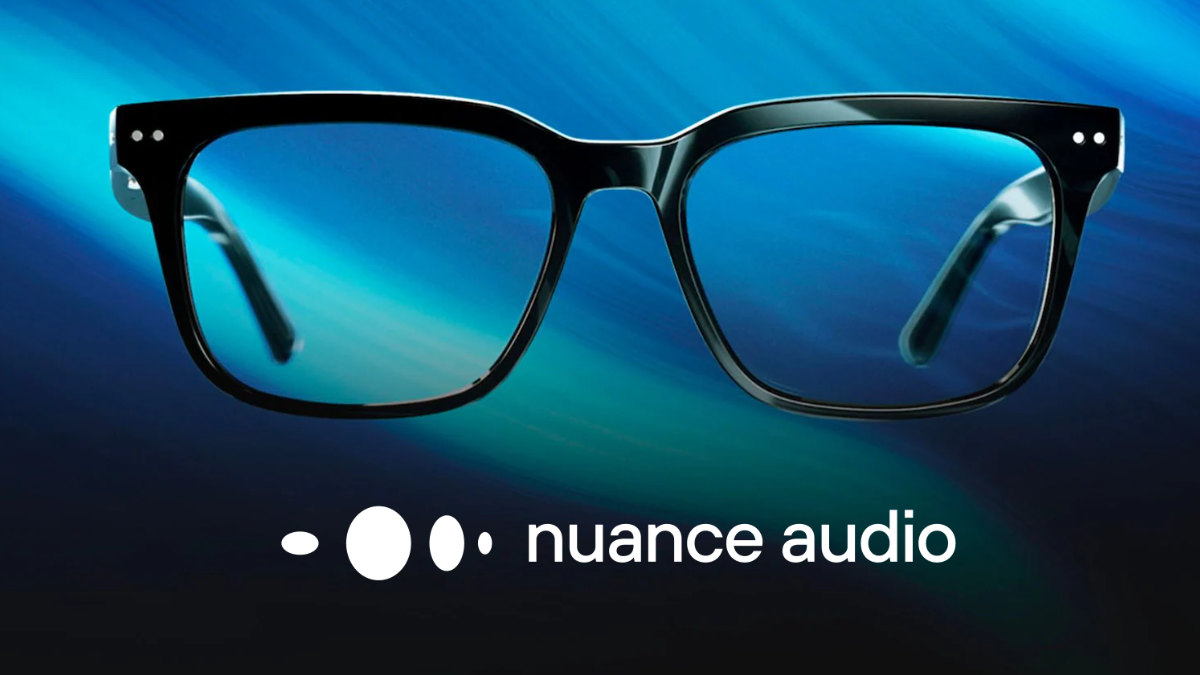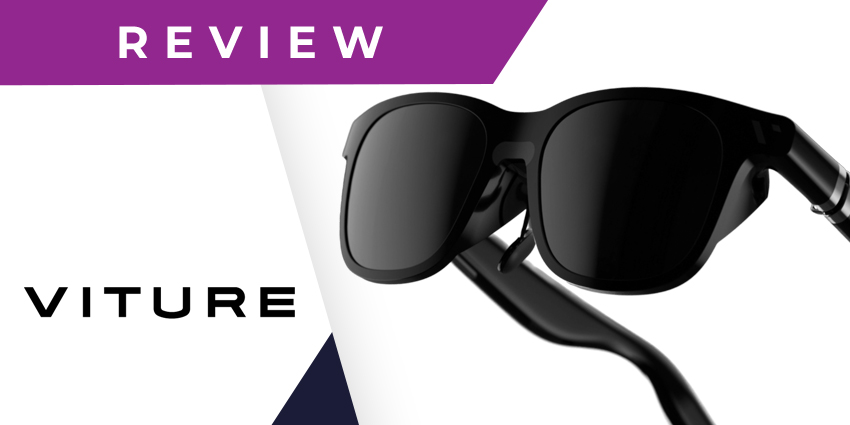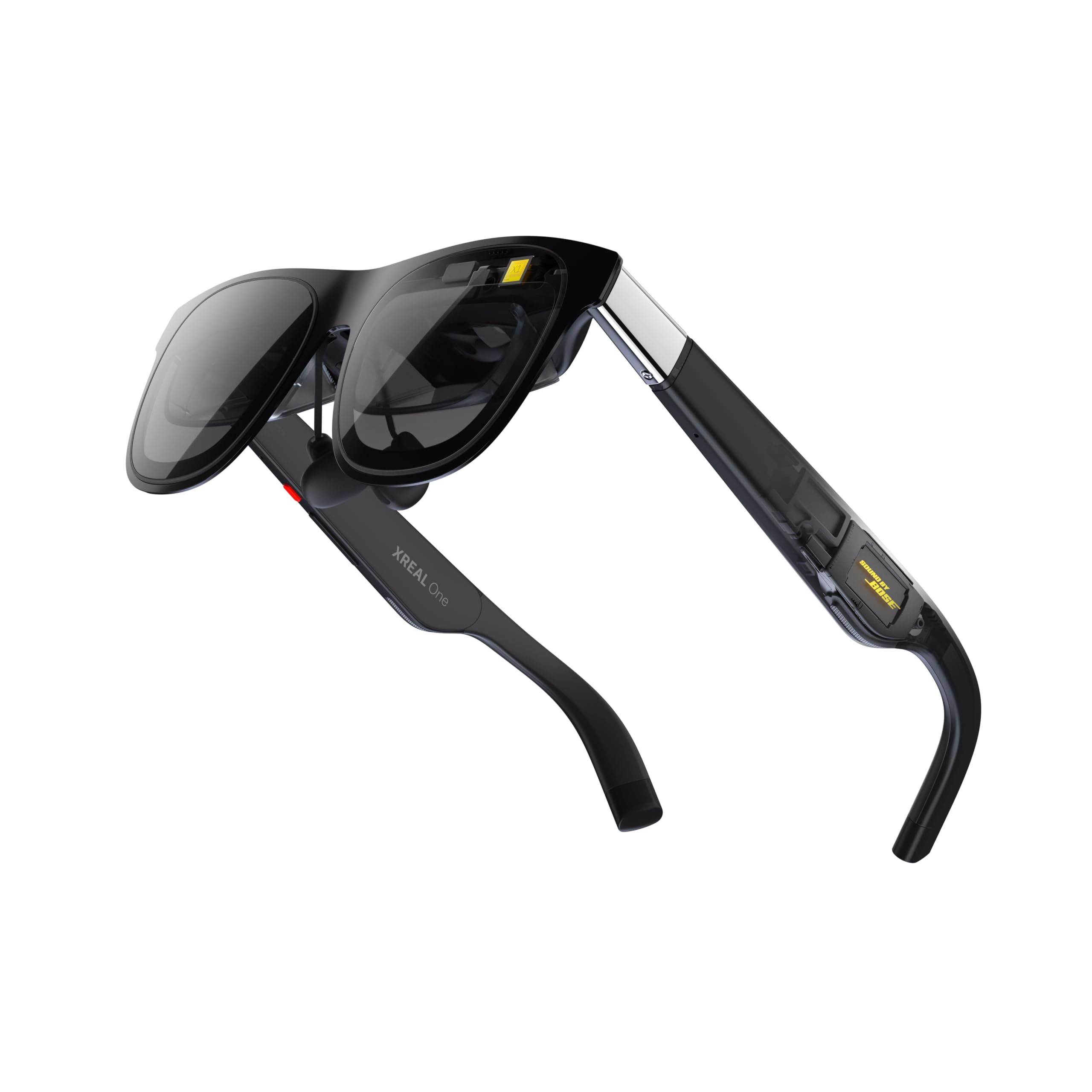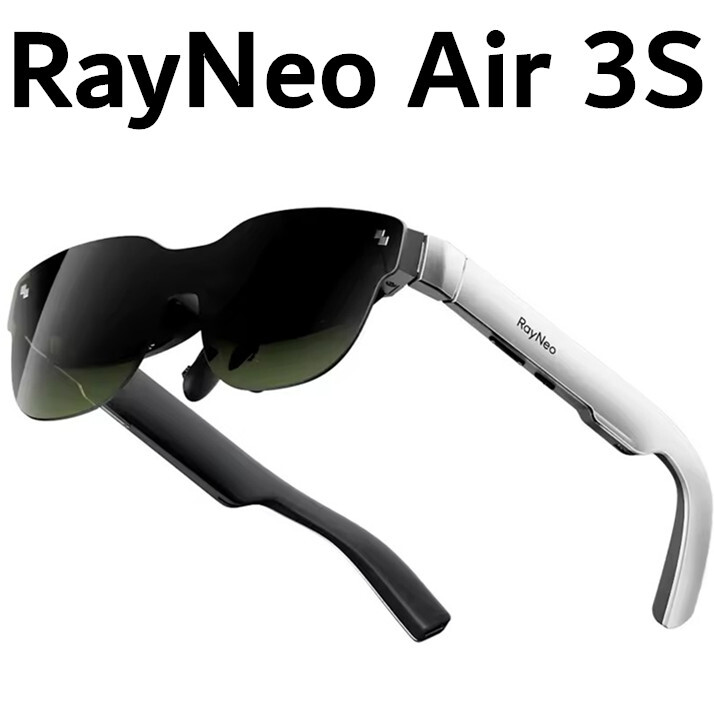Top 10 Best AI Smart Glasses in 2025
By ICON TEAM | Published on Oct 15, 2025
AI smart glasses are a game-changer in the fast-changing world of wearable technology. By 2025, they will combine augmented reality (AR), artificial intelligence, and ordinary eyewear into gadgets that make work, play, and access easier. These glasses are more than just regular sunglasses or prescription frames. They have capabilities like AI help in real time, heads-up displays, voice interfaces, and even health monitoring, all while looking elegant and without getting in the way. As AI becomes more integrated, smart glasses are becoming essential for professionals who require quick translations or alerts, gamers who want portable screens that feel real, and people who have trouble hearing and need modest audio improvements. This year's best options focus on comfort, battery life, and new AI features that come from improvements in micro-OLED displays and proactive computing. These 10 best smart glasses models of 2025 are the best of the best. They let you navigate cities with AR overlays or take pictures of life without using your hands.
List Of Top 10 Best AI Smart Glasses in 2025:
1. Halliday Glasses:
In 2025, Halliday Glasses will be the best because they combine proactive AI with a minimalist design. They have an ultra-tiny, invisible display that shows information directly in the user's peripheral vision without blocking the real environment. These fashionable frames weigh only 35 grams and look like high-end fashion glasses. They come in matte black, tortoise shell, and silver finishes, so you can wear them all day at work or play. The main AI engine, which is driven by a bespoke neural processor, guesses what the user wants by looking at their eye movements and the situation. For example, it might recommend routes to go while walking or summarize emails while you're talking. It does this using bone-conduction audio to keep things private. The reviews say that the microphone is quite clear, which makes voice commands work perfectly. The open-ear speakers are said to be above average, but not great, so they're good for podcasts but not for immersive music. The battery lasts up to 8 hours of active usage, and the quick-charge case gives you two complete recharges. It works with key AI platforms like Grok and Gemini, so it will work with a wide range of devices. Halliday's nosy-but-helpful AI costs about $399 and has generated discussions about privacy. However, its lightweight design and proactive functions make it a popular pick for tech-savvy city dwellers who want a little extra help.
2. Snap Spectacles:
In 2025, Snap Spectacles will be in their fifth generation. They will change the way people experience social AR by making it possible to share augmented adventures in everyday life. These glasses weigh only 50 grams and have two 1080p cameras for recording 3D spatial films. They also have a 46-degree field of vision (FOV) display that shows interactive lenses, such virtual try-ons for clothes or painting sessions with friends, right in front of the user's eyes. AI improvements include real-time object detection for rapid translations or amusing filters. Snapchat's neural network, which learns from user patterns to generate personalized AR content, powers these features. The battery life has gotten better, lasting 45 minutes of continuous AR use or up to 2.5 hours in audio-only mode. However, the vertical phone-like display needs some tweaking to get the best immersion. At $380, they are great for social situations and work well with both iOS and Android for exporting content. However, their low FOV can make them feel limited for big games compared to bigger competitors. In general, Snap Spectacles are great for creative people and social butterflies that like fun AI over serious work.
3. Nuance Audio:

In 2025, Nuance Audio stands out as the best AI smart glasses for hearing augmentation. They look like stylish everyday frames but have over-the-counter (OTC) hearing aid features for people with mild to severe hearing loss. These 28-gram glasses come in traditional shapes like aviator and wayfarer. They use directional microphones and AI-driven noise cancellation to make conversations louder while blocking out background noise. You can get up to 30dB boost and customize your profiles with an easy-to-use app. The AI part looks at speech patterns in real time and changes the volume and clarity for different places. For example, it boosts voices in busy cafes or filters out wind during outdoor calls. This earned them the prestigious Silmo d'Or Award for innovative eyewear. Comfort is a big plus, and labs have tested them for all-day usage. However, they don't work as well for people with very severe hearing loss; they work best for people with mild to moderate hearing loss. The battery lasts 16 hours on a single charge, and the casing is portable so you can charge it without anybody knowing. Bluetooth 5.3 makes sure that music or podcasts stream without any delays. Nuance Audio costs $450 and comes with a one-year warranty. It is popular with older professionals and active seniors who want to improve their audio without the stigma of traditional aids, even if some customers have complained about long wait times for customer service.
4. OPPO Air Glass 3:
In 2025, the OPPO Air Glass 3 comes out as a lightweight powerhouse with full-color AR screens and advanced AI in frames that weigh less than 40 grams. This shows that smart wearables can be both useful and stylish. The waveguide optics make a clear 1,000-nit brightness HUD for notifications, navigation, and gesture-controlled interactions. It also has AI features like real-time language translation and health monitoring, which tracks steps, posture, and even stress through built-in sensors. This makes it a useful daily companion. The glasses use OPPO's AndesGPT model to recommend actions, such calendar reminders that show up on your screen during meetings. They also work with extended reality apps for virtual meetings or fitness coaching. The adjustable nose pads and hypoallergenic titanium frames in a variety of colors make these quite comfortable. However, some people may think they look dorky because they are a little bigger than previous models. The battery lasts 11 hours on average use, and it charges quickly with USB-C. It also works well with OPPO's ecosystem, which makes AI work better across devices. These glasses cost $350 and are praised for their cutting-edge XR technology in a package that doesn't get in the way. They're perfect for commuters and remote workers who want AR without the sci-fi bulk.
5. RayNeo Air 3s AR Glasses:
RayNeo Air 3s AR Glasses are among the best of 2025 because they offer an unbeatable value for video immersion. For just $269, you can experience a 201-inch virtual cinema with HueView micro-OLED panels that have 98% DCI-P3 color accuracy and a 200,000:1 contrast ratio for stunning visuals. These sleek, aviator-style frames weigh 76 grams and have two 1080p displays with a 120Hz refresh rate and a 46-degree field of view. They're great for streaming movies or playing games on the road, and they also have AI-driven upscaling that sharpens low-res content in real time. With open-ear speakers, spatial audio gives you crystal-clear surround sound, and the built-in Dimensity processor handles AR overlays like virtual subtitles or productivity tools without any lag. The battery lasts for 5 hours of continuous playback and may be extended with the accompanying case. It works with consoles, PCs, and phones, which makes it more appealing. Reviewers like the wide field of view and bright colors that make everything look sharp from edge to edge. However, the fixed IPD may not fit all facial shapes completely. RayNeo Air 3s are great for travelers and entertainment fans who want high-end AR without paying a lot for it.
6. Rokid Max AR Glasses:
With their huge 215-inch equivalent screen and cinematic-grade optics, Rokid Max AR Glasses take over entertainment niches in 2025, turning any room into a private theater for movies, games, and immersive apps. The 75-gram metal frames have two micro-OLED displays with a resolution of 1200p, a brightness of 600 nits, and a field of view of 50 degrees. They run on Rokid's YodaOS, which adds AI capabilities like auto-keystone correction and gesture navigation that change based on how the user moves. The AI suite includes content suggestions based on what you've watched before and live improvements, including color grading for streamed material, which is great for people who like to binge-watch. The quad speakers give you rich, directional sound, and the 4-hour battery (with a 3-hour case recharge) is great for long sessions. The only problem is that the device becomes hot when you use it a lot. They work with iOS, Android, and Steam Deck, and reviewers have praised their portability, saying that the colors are amazing and that they work perfectly with iPads for games like Hades. The Rokid Max costs $449 and is great for people who love big-screen magic in a small, elegant container more than all-day productivity.
7. Ray-Ban Meta Smart Glasses:
In 2025, Ray-Ban Meta Smart Glasses combine classic style with cutting-edge AI. They are a low-impact wearable that can take 12MP photographs and 1080p films hands-free, and they have whisper-mode audio and real-time AI questions through Meta's Llama model. The original Wayfarer or Headliner frames, which weigh 48 grams or more, hold five microphones for crisp calls and a 14MP ultra-wide camera for POV storytelling. They also have AI features like object detection ("What's that landmark?") and live translation while traveling. The battery lasts for 4 hours of heavy use or 36 hours on standby. It comes with a charging case for simple top-ups. The open-ear design lets you be aware of your surroundings without impeding your view, unlike bulkier AR competitors. You can share things right away because it works with WhatsApp and Instagram, and it works with prescription lenses, which makes it easier for more people to use. They get good reviews for making big improvements in photo quality and usability after months of testing, but the AI can seem gimmicky at times and the audio isn't the best for music. Ray-Ban Meta is great for people who make content and utilize social media. It shows that smart glasses can be cool and useful without sacrificing style.
8. VITURE Pro XR Glasses:

In 2025, the VITURE Pro XR Glasses will change the way we think about portable XR. They will have a 135-inch virtual display with two Sony micro-OLED screens at 1080p and 4000 nits peak brightness, making gaming and work clearer than ever in a frame that weighs only 78 grams. With a 46-degree field of view and a 120Hz refresh rate, plus AI spatial tracking, this device makes a solid "GameSpace" for AR overlays like virtual monitors or multiplayer lobbies. It also has electrochromic dimming for use outside. The glasses include a Qualcomm Snapdragon chip inside and can be adjusted for prescription users. They also come with SpaceWalker software for using multiple screens on laptops or phones. The battery lasts for 4.5 hours of gameplay, and the magnetic shade blocks out light. The app ecosystem lets you make your own AI assistants to help you get more done. Reviewers love the broad, immersive screen and easy-to-use setup, which is great for gamers who are always on the go. However, the fixed bridge may need some adjustments to fit well. For $459, the VITURE Pro XR is a fashionable upgrade for mobile warriors who want XR flexibility without the extra weight.
9. XREAL One Pro:

XREAL One Pro is the most advanced AR smart glasses on the market in 2025. They have the broadest 57-degree field of view and project a crystal-clear 1080p image across two 0.68-inch micro-OLED displays with 5000 nits of brightness and an X1 spatial processor for smooth AI processing. The anodized metal frames weigh 80 grams and provide adaptive dimming and 3DoF tracking for stable AR experiences like virtual desktops or navigation aids. NebulaOS makes it easy to switch between devices. The AI toolset has eye-tracking for hands-free controls and real-time improvements, like edge-to-edge clarity without hazy corners. This is an improvement over prior versions. The quad speakers make sure the sound is balanced, and the USB-C power passthrough lets you use the battery for longer periods of time. It works with consoles, PCs, and phones, and people love it for its great picture quality and portability for gaming and work. XREAL One Pro is the best choice for anyone who want a lot of colorful AR in a sleek compact. It costs $499.
10. RayNeo Air 3s:

RayNeo Air 3s AR Glasses round up the list and prove once again that they are a great choice for budget-conscious AR fans in 2025. For just $269, they provide you a portable cinema with 201 inches of screen space and great value thanks to bright micro-OLED graphics and AI-optimized performance. The 76-gram frames hold two 1080p displays with 98% DCI-P3 coverage and infinite contrast. This makes them great for playing back clear video or using AR apps, where the Dimensity engine smoothly handles upscaling and spatial audio. The open-ear speakers provide you rich sound, and the 5-hour battery and travel case make it reliable on the road. This makes it a popular for commuters who stream video or gamers who use handhelds. The fixed interpupillary distance makes it less universal, but the wide FOV and accurate colors make it great for everyday use. RayNeo Air 3s, which are a repeat contender, show that you can have quality without spending a lot of money. This makes them a key part of AI-enhanced eyewear.
Comments 0